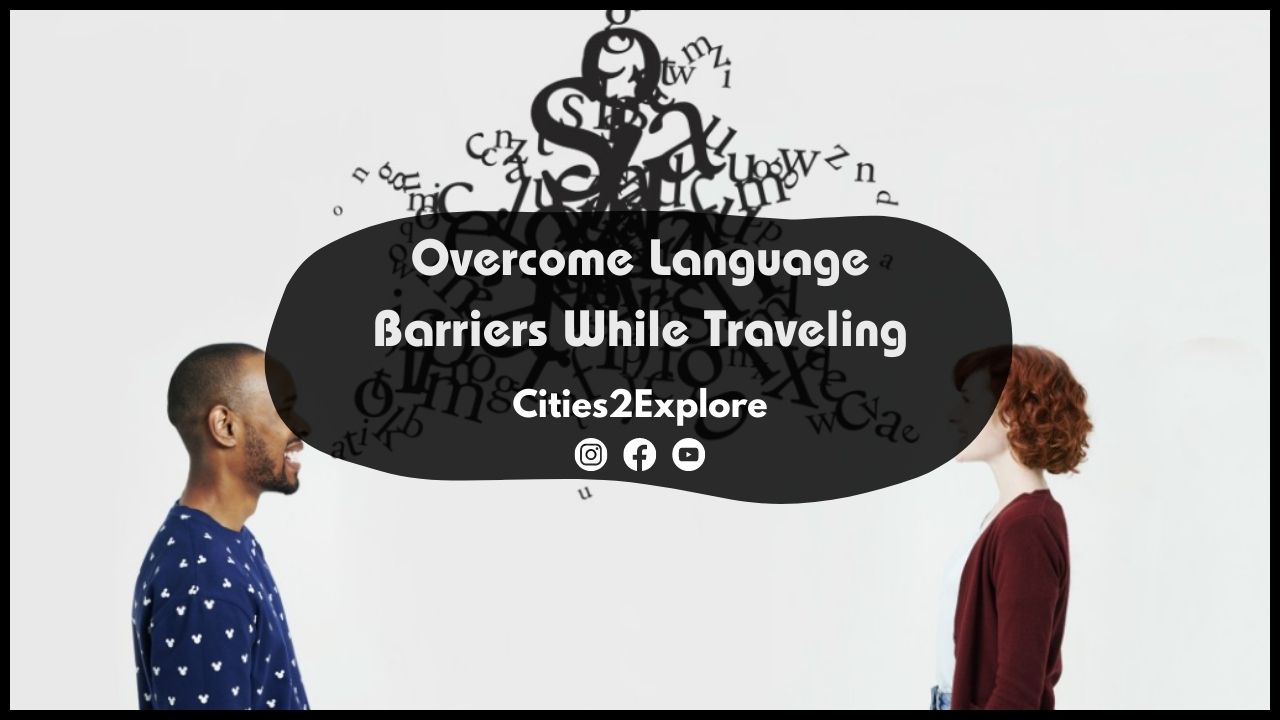Traveling to different countries is an exciting adventure that opens up opportunities to explore new cultures, taste exotic cuisines, and meet incredible people. It’s a chance to step out of your comfort zone and immerse yourself in the wonders of the world. However, one challenge that many travelers encounter is the language barrier.
As someone who loves to travel and has faced this hurdle countless times, I understand how frustrating it can be to not be able to communicate effectively with locals. But fear not! In this blog post, I’m going to share some personal tips and tricks I’ve learned along the way to help you overcome language barriers and ensure a smoother travel experience.
1. Learn Basic Phrases:
Before embarking on your journey, take the time to learn some basic phrases in the local language. Simple greetings like “hello,” “thank you,” and “goodbye” can go a long way in creating a positive impression and breaking down initial barriers. Additionally, knowing phrases like “Where is the bathroom?” or “How much does this cost?” can be extremely useful in everyday situations.
2. Utilize Language Learning Apps:
In this digital age, language learning has become more accessible than ever. There are numerous language learning apps available that can help you grasp the basics of a foreign language before you even set foot in a new country. Apps like Duolingo, Babbel, or Rosetta Stone offer interactive lessons and quizzes that make learning fun and engaging.
3. Carry a Phrasebook:
While technology can be incredibly helpful, it’s always a good idea to have a backup plan. Carrying a pocket-sized phrasebook that includes common phrases, expressions, and even useful vocabulary can be a lifesaver when you find yourself in a situation where internet access is limited or unreliable. Plus, it can be a conversation starter when locals see you making an effort to communicate in their language.
4. Use Non-Verbal Communication:
Sometimes, when words fail, gestures and body language can bridge the gap. Simple hand gestures, pointing, or miming can be surprisingly effective in getting your message across. For example, if you’re looking for directions to a famous landmark, you can point to a map or use hand signals to indicate walking or driving. Be mindful of cultural differences, though, as some gestures may have different meanings in different countries.
5. Be Patient and Have a Sense of Humor:
It’s important to remember that communication mishaps are a normal part of traveling. Don’t get discouraged or frustrated when you can’t express yourself perfectly. Instead, embrace the humorous side of miscommunication and use it as an opportunity to connect with locals on a more personal level. Laughing together can create a bond that transcends language barriers.
6. Seek Help from Locals or Other Travelers:
Never hesitate to ask for help! Locals are often more than happy to assist you, even if they don’t speak your language fluently. They may be able to point you in the right direction or find someone nearby who can help you. Similarly, other travelers you encounter along the way might have valuable insights or experiences to share. Engaging with others can be both informative and inspiring.
7. Embrace Technology:
In addition to language learning apps, technology offers various tools that can facilitate communication. Translation apps like Google Translate can translate text or even spoken words in real-time, making it easier to communicate with others. Some apps also have a feature that allows you to take a picture of text (e.g., menus or signs) and translates it instantly. This can be a great help when you’re dining out or exploring unfamiliar places.
8. Engage in Language Exchange:
Language exchanges are a fantastic way to practice speaking in a foreign language and improve your fluency. Many cities and towns around the world have language exchange events where locals and travelers come together to share their languages and cultural experiences. It’s a wonderful opportunity to make new friends, learn colloquial expressions, and gain confidence in your language skills.
9. Listen and Observe:
When you can’t understand what others are saying, pay close attention to their tone, facial expressions, and body language. Often, you can gather valuable information by observing their actions or watching how others interact. Listening attentively can also help you pick up on certain words or phrases that are frequently used. Being a keen observer can transform a seemingly impossible conversation into a meaningful exchange.
10. Stay Positive and Open-minded:
Above all, maintaining a positive attitude and an open mind will make all the difference in your travel experience. Embrace the challenges that language barriers present as opportunities for growth and cultural exchange. Remember that not being fluent in a language doesn’t mean you can’t connect with others. Sometimes a smile, a kind gesture, or a shared experience can transcend any linguistic limitations.
So, whether you’re planning a trip to Paris, Tokyo, or somewhere in between, remember these communication tips and don’t let language barriers hold you back from fully immersing yourself in the magic of your travel experience. Bon voyage and safe travels!

